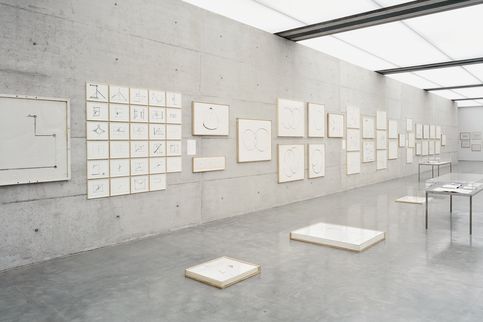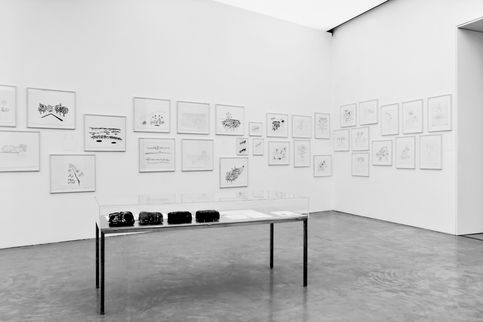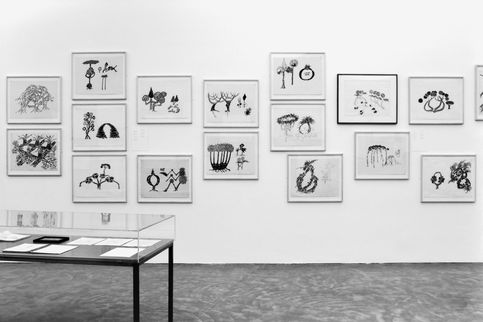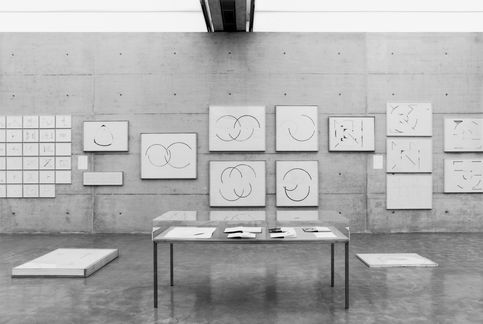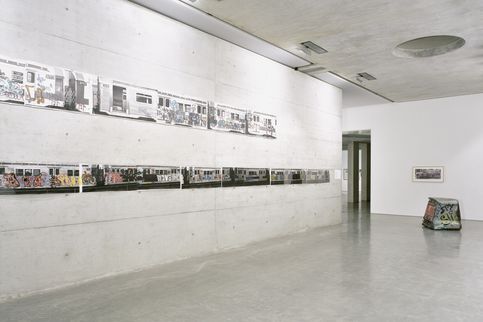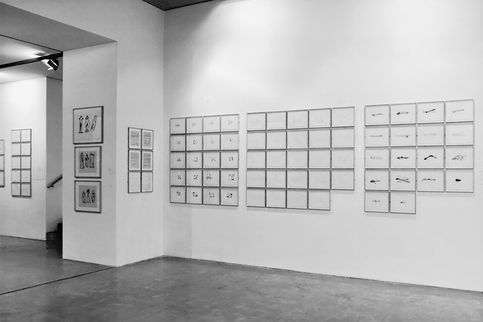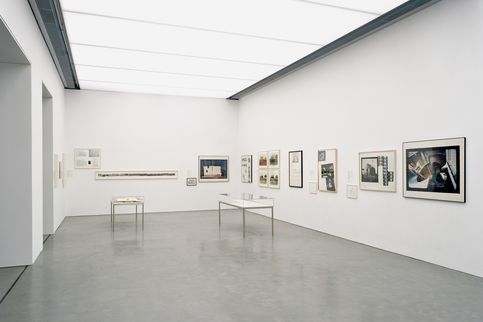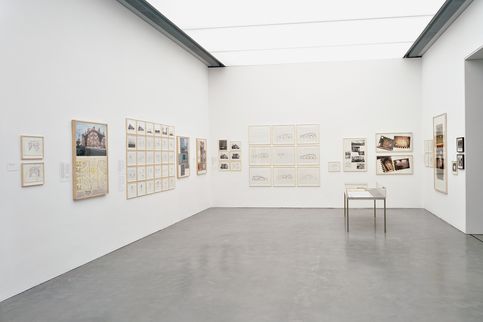Reorganizing Structure by Drawing Through it.
Drawings by Gordon Matta-Clark
Curator: Sabine Breitwieser
Curatorial Assistance, Exhibition Production: Daniela Stern
Collaboration List of works: Andrea Überbacher
The Generali Foundation prepared the first comprehensive exhibition of the innovative drawing work of the American artist Gordon Matta-Clark (1943-1978, New York).
Some 600 works were shown. "Drawing," as a category, is to be understood in the way the artist intended it to be. In addition to autonomous drawings, also included were the so-called cut drawings, proposals for projects, as well as works dealing with graffiti.
Gordon Matta-Clark, son of the Surrealist painter Roberto Matta, studied architecture at Cornell University in Ithaca, New York. However, the artist never really practiced this profession, instead, he became well-known for his "cuttings," transformations of buildings by means of cuts or extractions of building segments. The working process, the public’s encounter with the "opened" buildings, and the related moments of danger were all an integral part of his work. The diversity as well as the large number and extraordinary nature of his drawings only became known after the artist's death. This area of his work has, unfortunately, only had been touched upon in the retrospectives that were held in 1986 (Museum of Contemporary Art/Chicago, further stops in the United States and Europe) and in 1992 (IVAM/Valencia, further stops in Europe).
Proceeding from his ecological concerns and the influence of the Land Art movement, Gordon Matta-Clark worked almost obsessively with trees and their energy. This phase is closely related to the alchemist projects based on organic material from the artist's early New York period (1969-71). Matta-Clark developed pictographs from the trees, transforming them into abstract structures reminiscent of urban situations; calligraphies, arrows, as well as drawings dealing with energy and movement. The method of automatic drawing or writing introduced by the surrealists can be rediscovered in Matta-Clark's drawings in a form related to choreography. Matta-Clark was regarded as an exceptional dancer; he worked with Robert Wilson, among others.
With his so-called "cut drawings," beginning in 1972, Matta-Clark introduced the cut as a technique of drawing and sculpture. "A way of drawing in the same way as one makes sculpture" (Matta-Clark). The first "cut drawings" were relatively coarse and were made directly, i.e., without preliminary pencil drawings. Later, the cut drawings became increasingly complex, overlapping circular forms with vacant surfaces between the lines. Several of these works refer to concrete building projects.
Matta-Clark also recognized drawing as a factor in the social communication in an urban setting. He began working with graffiti relatively early, integrating it into his own work. As a trained architect, Matta-Clark used drawings to plan his large projects. Usually he made a number of sketches before making a decision. "A simple cut or a series of cuts functions as a powerful drawing and redefines spatial situations and structural units," claimed the artist on the occasion of one of his large projects "Office Baroque" (1977) in Antwerpen. Some of his most interesting drawings are the so-called "Sky Hooks," proposals for the "balloon buildings" made in the last year before Matta-Clark's premature death. He wanted to create a non-hermetic architecture which would revolve around the human body.
The Generali Foundation has dealt with Gordon Matta-Clark's work on numerous occasions. In 1996, his films were restored in collaboration with the Trust and acquired by the Generali Foundation collection. Moreover, the collection houses further key works of the artist, some of which were shown at the Documenta X.
In connection with the project, an archive on Matta-Clark has been set up, which is open to the public in the Generali Foundartion Study Center.

